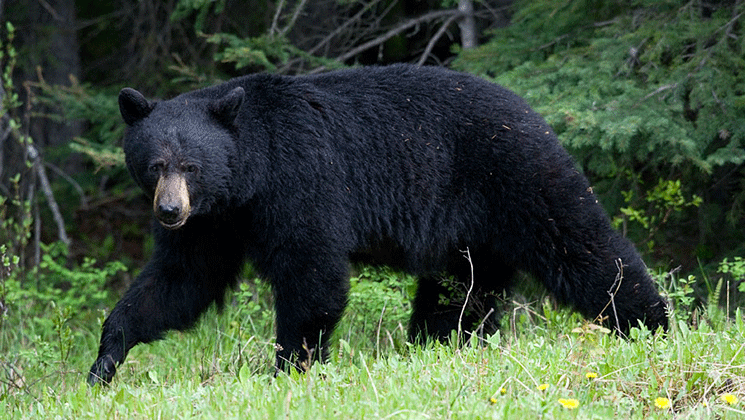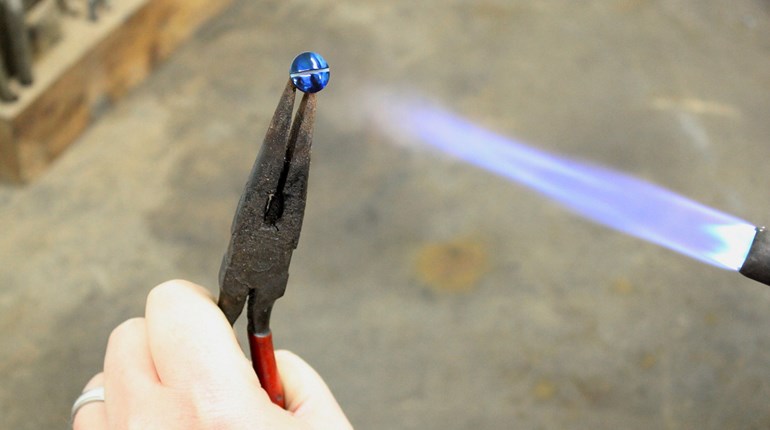
Spring is a welcome time of the year. Flowers bloom, trees produce new foliage and warm temperatures cast away the winter doldrums. Fishing is often at its best, and many other outdoor opportunities are available. Hunting in most of the country is essentially limited to turkeys, wild hogs and varmints, which is good news. But there’s another opportunity that many hunters are either unaware of or have never considered due to the logistical requirements and know-how needed to hunt in a strange new place; western black bear hunting.
Public Land Hotspots
A handful of western states offer spring bear hunting, each with varying regulations. Some allow baiting and/or hunting with hounds, and some allow neither. I’ve had the good fortune to have hunted black bears in the spring in much of the West, and I’ve narrowed my all-time favorite spots to parts of two states. This isn’t to say there isn’t excellent bear hunting in other places, but these are locations I return to time after time for a spring hunt.
Idaho and Montana are my go-to states for spring bears. I see far more bears there than anywhere else, even though I live in Wyoming, which also offers good spring bear hunting. Specifically, I head for the Idaho Panhandle and northwest Montana. It’s not uncommon to see a half-dozen bears a day from my pickup truck. If you think it’s unethical to drive and look for bears, let’s put that in perspective. You can see Venus from the pickup truck, too. The trick is getting there. Some bears might be in a place where it could take a multi-hour hike over rugged terrain to get within shooting range, others may walk off from where you spotted them and be long gone before you get to their original position, and some might be in places where it’s impossible to get to, such as across a wide, deep river, or a place virtually impenetrable with dense blowdowns and thick timber. Some may even require a hike across a chunk of private land where you have no permission to trespass.
The country I hunt in these two states is public land, primarily the Panhandle National Forest in northern Idaho, which is an aggregation of three other national forests—the Kaniksu, St. Joe and the Coeur d’Alene National Forests. Together, they offer a whopping 3 million-plus acres of public hunting. In Montana, my favorite is the Kootenai National Forest which includes more than 2 million acres. Again, there are many other superb places to hunt spring bears, but these are my top choices because I see more bears on a consistent basis.
Determine Where You'll Camp
Let’s say you’re a newcomer to that region. Where do you start? First, of course, determine where you’ll camp. There are many Forest Service campgrounds, as well as private campgrounds. You can also find cabin rentals and motels in the smaller towns close to where you intend to hunt. As soon as you’re settled, head to a Ranger Station and buy a map of the forest you’re hunting. If possible, you should do this beforehand and look it over before you arrive. If you plan to hunt with an ATV, be aware that many roads are off-limits to four-wheelers. It’s always a good idea to arrive early so you can do some scouting.
Hunting Strategies
There are several hunt strategies. The first is to simply take off and start hiking with no destination in mind in country you’re unfamiliar with. The downside here is that you’ll need plenty of time, because it could take days before you see a bear since you aren’t covering a lot of ground. I’ve tried that several times. It’s a fun, challenging way to hunt, but chances of seeing a bear are slim, unless you’re in country that has an unusually high number of bruins. National Forests have plenty of roads that are behind a locked gate. They’re usually old logging roads, and are closed to prevent erosion from vehicle traffic and to maintain a degree of quality hunting. These roads are especially suitable if your physical condition doesn’t allow you to negotiate steep timbered terrain with thick underbrush. With a walking stick, you can pick your pace and hunt according to your physical ability. You’ll probably see very few, if any hunters, and some might be on horseback.
Another strategy is to sit quietly at the edge of a large meadow where you see fresh sign. This requires plenty of patience and determination. I recall a hunt where my companions and I waited next to a clearing that had an abundance of sign including plenty of scat and newly chewed grass. It was a warm, sunny day, and I confess to having fallen asleep. One of my friends whispered, “Bear!” and I awoke to see a beautiful cinnamon bear emerging from the timber. One of my companions dropped it with a great shot.
Driving slowly along the countless hundreds of miles of forest roads allows you to cover tens of thousands of acres in a short time. The negative aspect is not seeing what’s to be seen. Because you’re moving, you aren’t focusing on a likely spot. A bear can be completely hidden behind a bush, a stump or a small rise as you drive along, and you might never see it. And, as I mentioned, just because you can see a bear doesn’t mean you can get to it. Admittedly, the drive-and-glass strategy has been responsible for seeing far more bears than other techniques, in my experience. If you do this and see a bear that you intend to try to approach, park your vehicle safely off the side of the road and plan for an all-day hunt. Don’t make the mistake of thinking you’ll be gone only a few hours. Bring your full pack with survival gear. Chances are good you’ll be returning after dark, and hopefully with a big smile on your face and a punched bear tag.
Calling is another option. I’ve had the best results with a fawn-in-distress call. Choose your calling location where there’s plenty of fresh sign. Bear country is big country. You could literally call from dozens of places where no bear will ever hear you. Up your odds by choosing a likely area.
When you hunt—whether you’re walking, driving or sitting—pay close attention to places that offer an attractive menu to a bear. When it emerges from its winter den, it’s famished, and will forage on whatever is available—green, lush grass is at the top of the list. Bears will follow the receding snow line to get at early grass. Prime spots include large clearings or meadows surrounded by heavy timber. Old burns are also ideal places to watch, since forest fires typically encourage the growth of palatable herbs and brush. Freshly logged areas offer the same forage opportunities. Don’t overlook rockslides, which are favorite places for bears.
Bear baiting is illegal in Montana, but legal in Idaho. It’s a technique geared to hunters who typically have plenty of time and are intimately familiar with the area, since it requires one to locate a good bait site, gather the bait, and continually visit the site. Many hunters keep the bait sites active for weeks. That being the case, most DIY hunters don’t have the time to hunt over baits, but are more mobile. If you decide to bait, be aware of the many rules that must be followed.
Though bears are typically nocturnal, they often feed on and off during the day in the spring because of their voracious appetite. However, the most important time of the day to be out hunting is the last hour of daylight. This is when most bears are active. That, of course, requires that you be prepared to field dress and deal with the bear in the dark, including carrying it out at night, unless you wish to return in the morning. In that regard, a DIY hunt also requires that you know the basics of skinning a bear, including the paws and caping the head.
Another plus in hunting this region is that there’s a preponderance of “color phase” bears. In many places, black bears are almost always black—anything different is a rarity. But in the Rockies, bears may be cinnamon, blonde, chocolate brown and black, and sometimes a combination of colors; I’ve seen blonde bears with cinnamon colored legs.
As always, carefully review the bear hunting regulations in the state you’re hunting. Be aware that every harvested bear must be reported to the state wildlife agency within so many days of the harvest.
Important Note for Montana Bear Hunters: Montana has a Bear Identification Program that requires all residents and non-residents to take a test that depicts images of black bears and grizzly bears. The idea is to prevent accidental shooting of grizzlies. There are 15 questions, and you must answer 12 correctly. If you fail, you can take the test over until you pass. The test can be taken anytime, even after the season opener on April 15. If you take the test during the season, you must wait 24 hours before purchasing a license. To take the test online, go to fwp.mt.gov/education/hunter/bearID/.



































